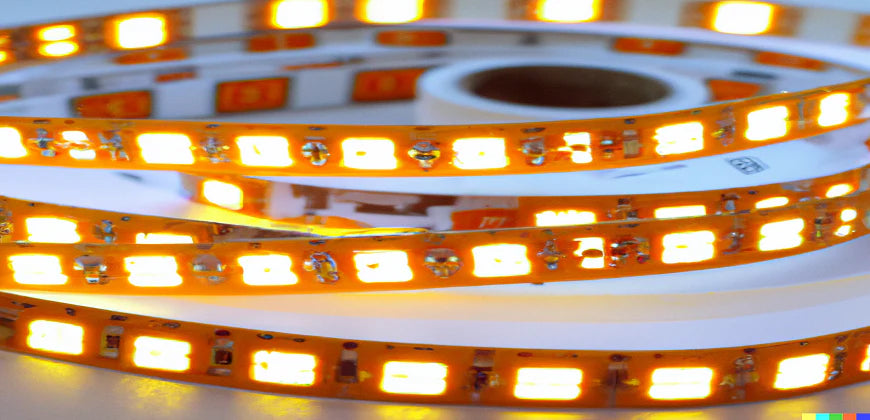
Useful Information About LED Strips
Shari
LED strips are electrical devices that contain multiple small, interconnected LEDs that are mounted on a flexible strip of material. These strips are commonly used for lighting, decoration, or signage, and are available in a variety of sizes and colors.
There are several types of LED strips, which differ in their specifications. Here is a list of the most common types of LED strips:
-
Monochromatic LED strips: These strips have LEDs of the same color, such as red, green, blue, or cool white. These strips are ideal for ambient lighting or signage.
-
RGB LED Strips: These strips contain red, green, and blue LEDs that can be mixed to create a variety of colors. These strips are ideal for decorative lighting, mood lighting, or for use in entertainment scenes.
-
LED strips with power supply: These strips include a power supply, which can be plugged into an electrical outlet or USB port. These strips are ideal for lighting up offices or living rooms.
-
Smart LED strips: These strips are controlled via WiFi or Bluetooth, allowing you to set them via your smartphone or tablet. These strips are ideal for lighting your living room or bedroom.
-
Motion sensor LED strips: These strips include a motion sensor that will activate when someone approaches them. These strips are ideal for use in hallways or garages.
The benefits of using LED strips are multiple, including:
-
Energy efficiency: LED strips consume less energy than other types of lighting, such as incandescent bulbs or compact fluorescent bulbs.
-
Long lifespan: LED strips have a longer lifespan than other types of lighting, making them a more durable and economical option.
-
Flexible design: LED strips are very flexible and can be mounted on a variety of surfaces, including ceilings, walls, or around furniture.
-
Color diversity: LED strips are available in a variety of colors, making them ideal for decorative lighting or creating different atmospheres.
-
Easy to use: LED strips are easy to install and can be controlled via remote control, smartphone or tablet.
-
Safety: LED strips are safer than other types of lighting because they produce less heat and do not contain hazardous substances.
-
Light intensity: LED strips are available in a wide range of light intensities, so you can always find the right level of light for your lighting needs. This intensity is measured in lumens and can be adjusted via a dimmer or remote control.
-
Color temperature: LED strips can be set to a wide range of color temperatures, from cool white to warm white. Color temperature is measured in degrees Kelvin (K), with a lower temperature meaning a warmer, more yellow light, while a higher temperature means a cooler, more bluish light.
-
Degree of protection: LED strips are available in different degrees of protection, depending on their use. If the strips will be used outdoors or in high humidity environments, you should look for strips with a higher degree of protection, such as IP65 or IP68.
-
Mounting Type: LED strips can be mounted in a variety of ways, including flat surfaces, nails, or ceiling tiles. Some LED strips come with a strong adhesive on the back, which makes mounting easier, and others have clamps to secure them to surfaces.
-
Price: LED strips come in a variety of prices, depending on their specifications and quality. In general, the price will vary depending on the length of the strip, the number of LEDs, and additional features such as smartphone control or motion sensors.
In general, LED strips are a great option for decorative lighting, signage, or ambient lighting. They are energy efficient, easy to use, and offer a variety of lighting control options. However, it is important to choose a quality strip with the right specifications for your use and install it correctly to achieve the best results.
